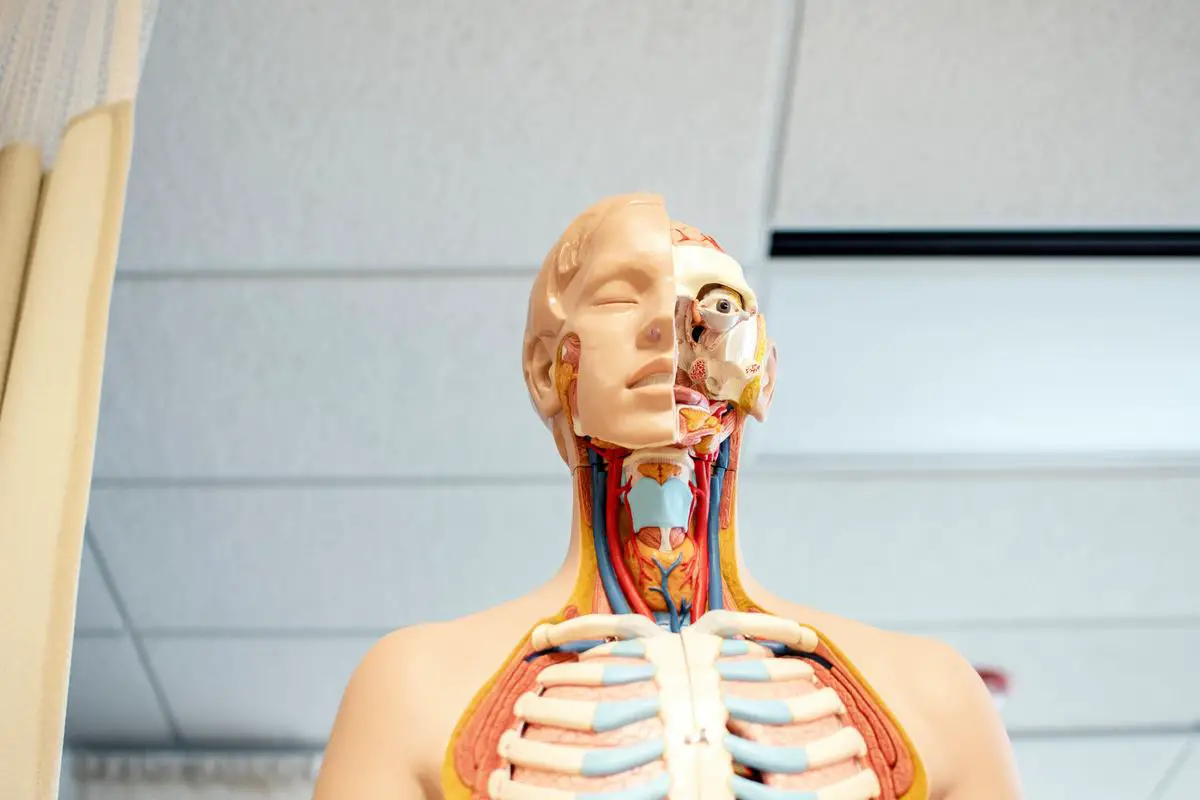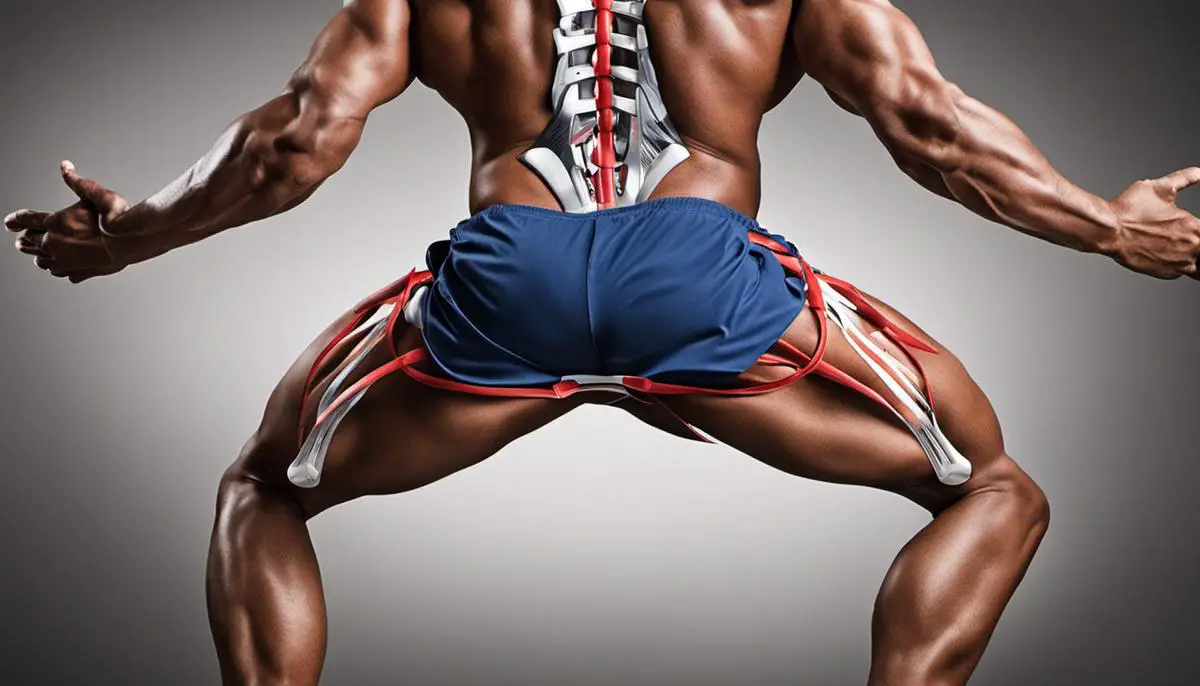Back strength and health are integral for overall well-being and athletic performance, and understanding the key aspects of lower back health is an essential step towards preventing potential injuries. The anatomy of the muscles involved, their functions in our daily activities, and their link to the core muscles, provide an important context around why lower back health is critical. Coupled with knowledge of effective gym exercises designed to target and strengthen these muscles, we can drastically reduce the risk of lower-back related issues. Furthermore, integrating these exercises seamlessly into your gym routine for a balanced workout requires careful planning and understanding of elements like frequency, repetition, and rest. Lastly, our overall approach to back health should not discount the immense value of nutrition and other recovery techniques. We’ll investigate all these facets to equip you with comprehensive information on this topic.
Understanding lower back anatomy
Understanding Lower Back Anatomy: The Key Muscles and Their Function
The lower back, or the lumbar region, is a complex structure of interconnected and overlapping elements. It comprises the last five vertebrae in the spinal column, and is responsible for supporting much of the weight of the upper body. This region is made up of several crucial muscles that support our everyday activities, such as standing, bending, and lifting.
The main muscles in the lower back include the erector spinae, quadratus lumborum, and latissimus dorsi. On either side of the spine are the erector spinae muscles, which run the full length of the spine and help you to stand up straight and lean back. The quadratus lumborum muscles are located deep within your back on either side of the lumbar spine. These muscles support your spine when you’re standing, help with side-to-side movements, and aid in the rotation of your lower back. The latissimus dorsi are large muscles in your lower back that play a crucial role in many upper body movements, like pulling and reaching.
Role of Core Muscles in Lower Back Health
The health of your lower back is intricately connected to the health and strength of your core muscles. Your core includes not just your abdominal muscles, but also your obliques (which run diagonally across your stomach) and your muscles around the spine.
When these muscles are in good condition, they can provide the necessary support for your lower back and foster proper posture, reducing the likelihood of back pain and injury. Weak core muscles, on the other hand, can lead to a dependence on the lower back muscles, causing them to overwork and resulting in strain or injury.
The Relationship Between Lower Back and Overall Body Movements
Understanding the role of these muscles reveals their importance in overall body movement. The muscles in your lower back are responsible for maintaining the correct curvature of your spine while standing. They bear a significant portion of your body weight and hence are pivotal in movement.
When your lower back is strong and flexible, it supports healthy movement in your hips and upper body. It also allows for effective force transfer between your lower and upper body, which is particularly important when performing activities that involve pushing, pulling, or lifting.

Exploring relevant gym exercises
Strengthening Lower Back: Deadlifts
The deadlift is a weight training exercise that targets several muscle groups including the lower back. It involves lifting a loaded barbell off the ground to the level of the hips and then lowering it back to the ground. To perform the deadlift safely, you should keep your back straight, use your legs to lift the weight, and ensure your movements are slow and controlled. Benefits of deadlifts include improved posture, increased core stability, and prevention of lower back pain. However, the potential risks include injury to the back or knees if not performed with proper form or if lifting excessive weight. The equipment needed for this exercise is a barbell and plates of varying weights.
Targeting Lower Back: Back Extensions
Back extensions, also known as hyperextensions, are an exercise intended to strengthen the lower back muscles, particularly the erector spinae. The movements involve bending forward at the waist and then straightening up again. This can be done on a gym machine specifically designed for the exercise, or using a stability ball or bench. The benefits of back extensions include improved posture and reduced risk of lower back injury. If performed incorrectly, though, it could lead to strained or pulled muscles, which is why it is vital to maintain proper form. Equipment needed for this exercise is either a hyperextension bench, a gym ball, or an ordinary bench.
Lower Back Exercise: Front Squats
Front squats are a versatile exercise that works various muscle groups, including the lower back. It requires the individual to hold a barbell in front of the chest and then squat down as if sitting, before rising back up again. Proper form includes keeping your elbows high, your back straight, and your knees in line with your toes. Not only does the front squat help in developing strong quadriceps, but it also enhances core and lower back strength. However, caution should be exercised when performing this exercise due to the risk of knee and back injury if not done correctly. The equipment necessary for this exercise includes a barbell and a squat rack.
It should be noted that it is always advised to consult a trainer before starting any new exercise routine, particularly when using heavy weights, to minimize the risk of injury and to ensure you are getting the most out of your workouts.

Creating and following a gym workout plan
Understanding the Structure of an Effective Workout Plan
When crafting an efficient workout routine that effectively targets your upper, mid, and lower back, there are several factors to consider. These include the types of exercises incorporated, the frequency of these exercises, the number of repetitions per exercise, and the extent of rest in between sets and workout days. These elements are crucial in designing an exercise plan that is safe, efficient, and successful for achieving your fitness goals.
Key Components of a Back-Strengthening Workout
Upper back exercises like lateral pull-downs, bent-over rows, and reverse flys can help strengthen the major back muscles, including the latissimus dorsi, trapezius, and rhomboids. Mid-back exercises such as seated rows and one-arm dumbbell rows cater to the middle trapezius and rhomboids, while lower back exercises like deadlifts, back extensions, and hyperextensions primarily target the erector spinae muscles. As a guideline, you should include exercises for each section of your back to achieve an overall strong and balanced back growth.
Frequency, Repetition, and Rest for Maximum Effectiveness
Frequency refers to how often you train a certain group of muscles. For most individuals, working out the back muscles 2-3 times per week is sufficient to promote muscle growth and strength without overtraining.
Repetitions (or reps) are the number of times you perform a certain exercise. A general guideline is to perform 2-3 sets of 8-12 reps per exercise for muscle growth and strength. The number of reps can be adjusted according to individual fitness goals and endurance levels.
Rest is equally as crucial as exercising as it allows the muscles to repair and grow. For back exercises, aim for approximately 1-3 minutes of rest between sets. Further, ensure that there’s a rest day between each workout session to prevent overtraining and boost recovery.
Creating a Workout Plan Focusing on Back Muscles
A sample week for a back-centered gym routine may look something like this:
- Day 1: Upper back exercises, followed by 10 minutes of light cardiovascular exercise
- Day 2: Rest
- Day 3: Mid-back exercises, followed by 10 minutes of light cardiovascular exercise
- Day 4: Rest
- Day 5: Lower back exercises, followed by 10 minutes of light cardiovascular exercise
- Day 6 and 7: Rest or light activities like walking or yoga
Remember, the key to any successful workout routine is to listen to your body. Increasing the intensity, frequency, or repetitions too quickly can lead to injuries. Lastly, don’t neglect other aspects of your fitness routine – maintain a healthy diet, get sufficient sleep, and regularly monitor your progress to ensure you’re constantly moving towards your fitness goals.

Nutrition and recovery for lower back strength
The Importance of Hydration For Lower Back Strength
Staying properly hydrated plays a significant role in the health of your lower back. The discs between the vertebrae in your spine need water to maintain disc height and spinal alignment and to take pressure off the spine. Each individual spinal disc is roughly 80 percent water at when you wake up in the morning. As you go about your day, your body endures gravitational force, which pushes water out of your discs. By staying hydrated, you can replenish the lost water in your discs.
Protein: The Building Block for Muscle
Having adequate protein in your diet is vital for muscle recovery and building stronger muscles, including the muscles surrounding your lower back. Incorporate protein-rich foods such as lean meats, fish, eggs, legumes, and nuts into your diet. Consume protein within a 30-minute window post-workout to fuel muscle recovery.
The Role of Micronutrients in Lower Back Health
Besides protein, nutrients like calcium, vitamin D, and magnesium are integral for bone health and muscle function. Dairy products, leafy greens, and fortified foods are excellent sources of these micronutrients. Include a variety of these in your meals to ensure a well-rounded diet that supports lower back health.
Stretching and Mobility Exercises
Making time for stretching both before and after your workouts reduces the risk of injury and aids in muscle recovery. Lower back stretches should be performed slowly, holding each position for 15-30 seconds. Examples of beneficial stretches include the lumbar extension, hamstring stretches, and hip flexor stretches.
Recovery Techniques for Lower Back Strength
Active recovery days where you perform light exercises like swimming or yoga can boost blood circulation, helping bring nutrients to your muscles to facilitate recovery and growth. Additionally, adequate rest is crucial for muscle regeneration. Aim to get 7-9 hours of sleep nightly.
Implement Regular Massage and Heat Therapy
Getting a massage can help to reduce muscle tension and promote relaxation, which can aid in recovery. Heat therapy can also help by improving circulation and relaxing the muscles, helping to relieve pain and stiffness in the lower back.
Monitor Your Progress and Adjust Accordingly
Pay attention to how your body responds and adjust your diet, exercise, and recovery techniques as needed. If you experience persistent lower back pain, seek advice from a healthcare professional. Regular check-ins and continuous growth will help in improving lower back strength, reducing the risk of injury and promoting overall health.

Rounding off, ensuring the vigor of your lower back necessitates more than just knowing the relevant anatomy. It’s about exploring the vast array of gym exercises that can strengthen this key part of your body, implementing them appropriately into your workout regimen, and supporting your efforts with the right nutrition and recovery strategies. It’s a multifaceted process involving continuous learning and adaptation. Armed with this knowledge and understanding, you should be better equipped to make informed decisions for your lower back’s health, thus optimizing your overall physical functions and reducing the risk of debilitating back issues. Shaping your understanding today can determine the quality of your muscular health tomorrow.
